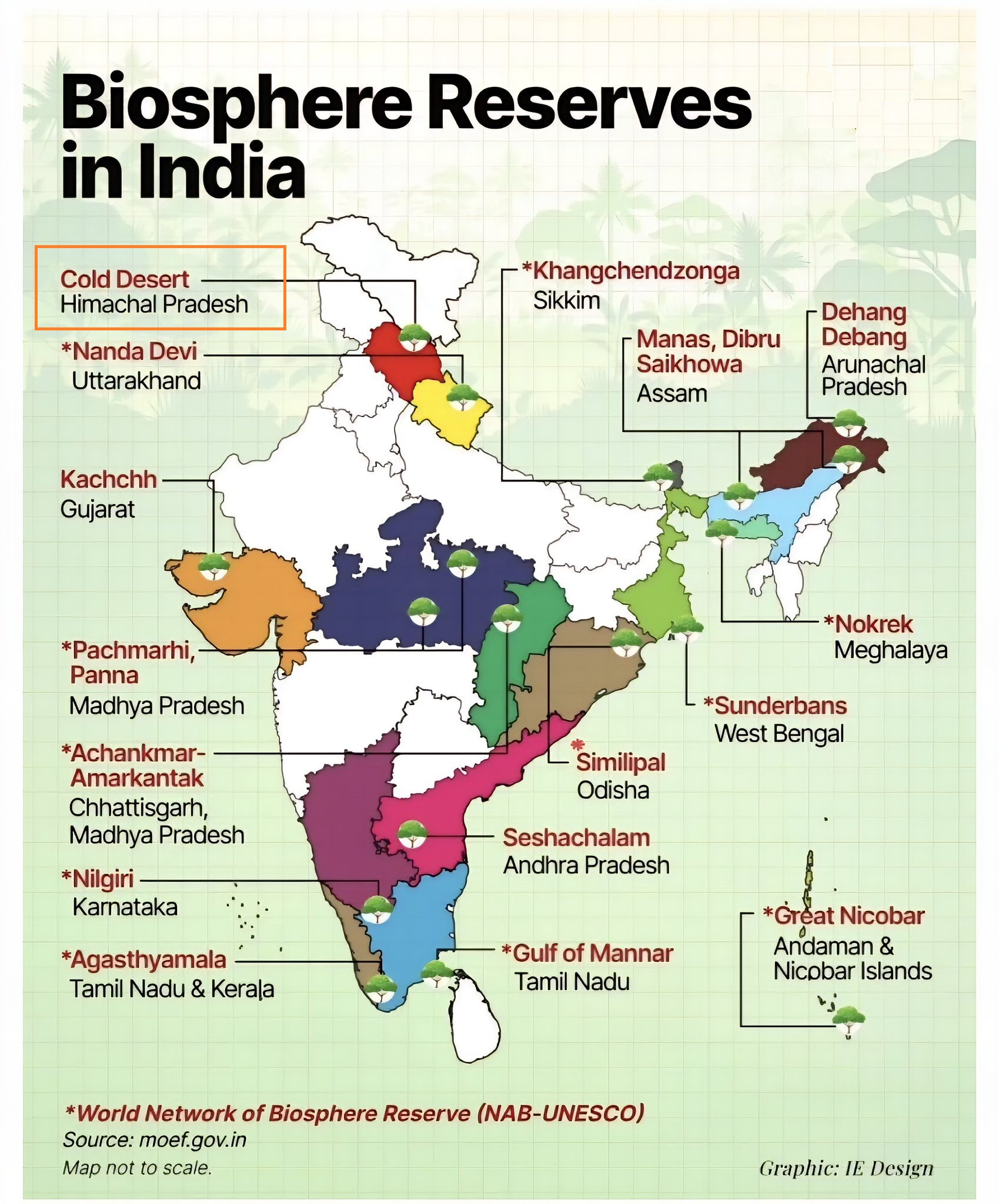Why in the News?
UNESCO added India’s Cold Desert Biosphere Reserve (CDBR) to the World Network of Biosphere Reserves (WNBR) under the Man and the Biosphere (MAB) programme.
With this, India now has 13 UNESCO-recognized biosphere reserves out of 18 designated nationally.
What are UNESCO Biosphere Reserves?
|
About Cold Desert Biosphere Reserve (CDBR):
- Location: Lahaul–Spiti (Himachal Pradesh), part of Trans-Himalayan biogeographic province.
- Constituents: Includes Pin Valley National Park, Kibber Wildlife Sanctuary, Chandratal Wetland, Sarchu Plains.
- Biodiversity:
- Flora: 732 vascular plants, incl. 30 endemic, 47 medicinal plants (Amchi / Sowa Rigpa).
- Fauna: Snow leopard (flagship), Tibetan wolf, Himalayan ibex, blue sheep (800+ in Spiti), Himalayan snowcock, golden eagle, bearded vulture.
- Communities: ~12,000 people; practice yak & goat herding, barley/pea farming, Tibetan herbal medicine, Buddhist monastic councils.
- Significance: Boosts eco-tourism, climate research, community-led conservation, sustainable livelihoods. Supports climate-resilient development in fragile ecosystems.

Biosphere Reserves in India:
- Total: 18 designated, of which 13 in UNESCO-WNBR (as of 2025).
- First: Nilgiri BR (1986); Largest: Gulf of Kachchh (Gujarat); Smallest: Dibru-Saikhowa (Assam).
- Scheme: Launched 1986; implemented by MoEFCC under MAB Programme.
- Three zones: Each biosphere reserve is organised into-
-
- Core zone (strictly protected),
- Buffer zone (limited human activity such as research, grazing, and tourism permitted), and
- Transition zone (sustainable human settlements and economic activities allowed).
- Funding: 90:10 (NE & Himalayan states); 60:40 (others).
| [UPSC 2019] Which of the following are in Agasthyamala Biosphere Reserve?
Options: (a) Neyyar, Peppara and Shendurney Wildlife Sanctuaries; and Kalakad Mundanthurai Tiger Reserve* (b) Mudumalai, Sathyamangalam and Wayanad Wildlife Sanctuaries; and Silent Valley National Park (c) Kaundinya, Gundla Brahmeswaram and Papikonda Wildlife Sanctuaries; and Mukurthi National Park (d) Kawal and Sri Venkateswara Wildlife Sanctuaries; and Nagarjunasagar-Srisailam Tiger Reserve |
Get an IAS/IPS ranker as your 1: 1 personal mentor for UPSC 2024

